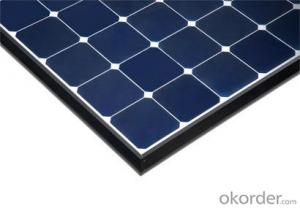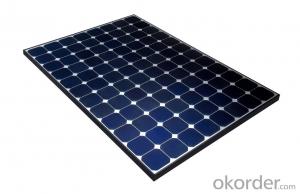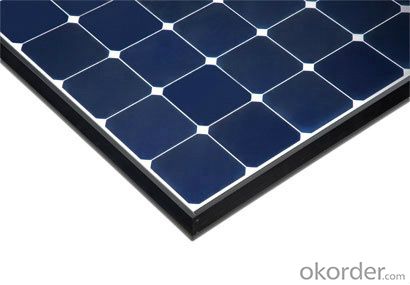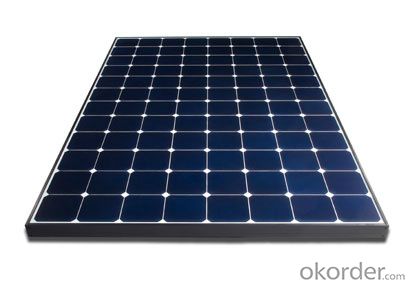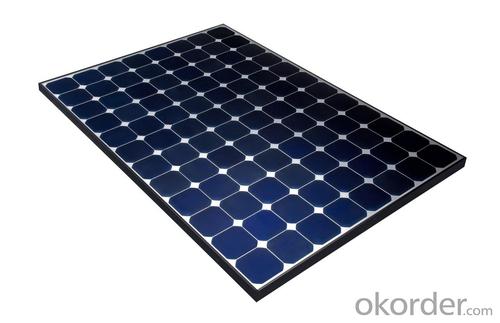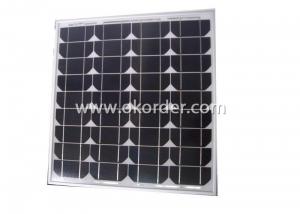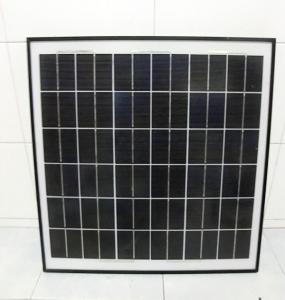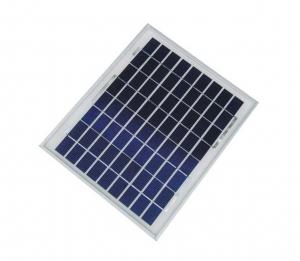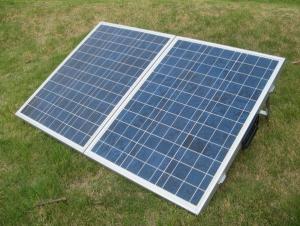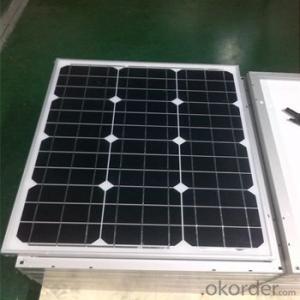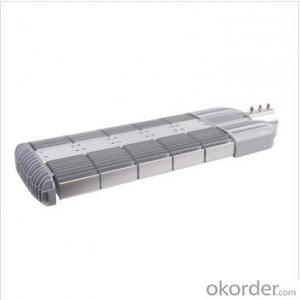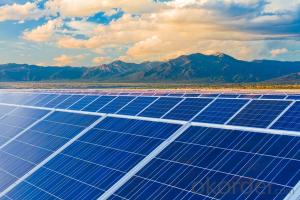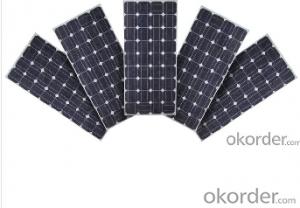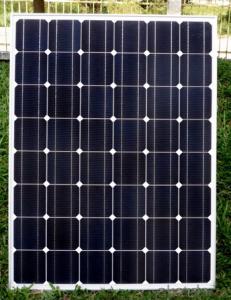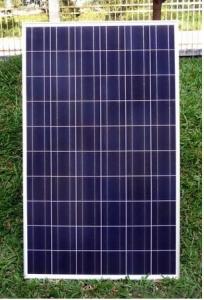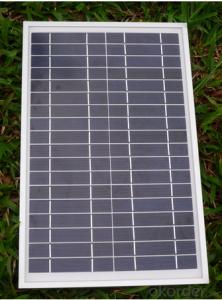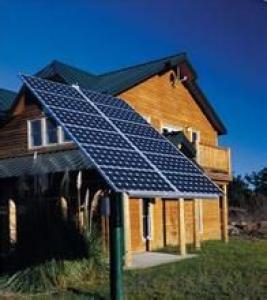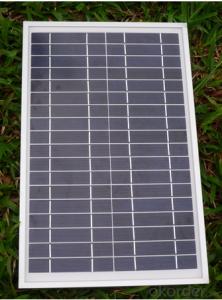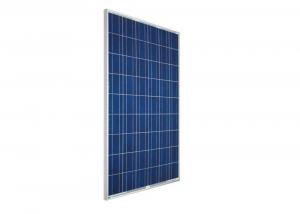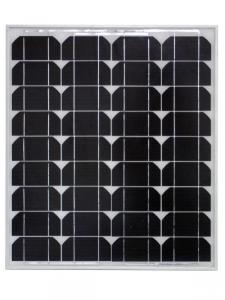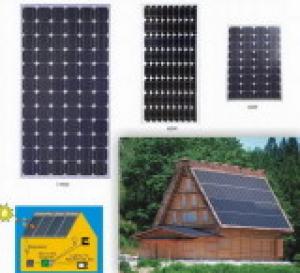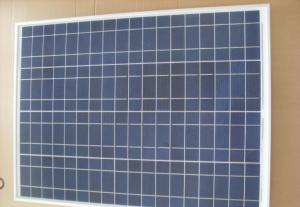A1 Solar Panels - Mono Solar Panel 290W A Grade with Cheapest Price
- Loading Port:
- Shanghai
- Payment Terms:
- TT OR LC
- Min Order Qty:
- 50 watt
- Supply Capability:
- 50000 watt/month
OKorder Service Pledge
OKorder Financial Service
You Might Also Like
Specification
Mono Solar Panel 290W A Grade with Cheapest Price
Product description
60 cell multi-crystalline solar module. 40mm natural anodised frame. IP65 rated Jbox, 1m solar cable and a pair of MC4 connectors.TÜV SÜD,SABS ISO 9001:2008 certified.
Most solar modules are currently produced from crystalline silicon (c-Si) solar cells made of multicrystalline andmonocrystalline silicon. In 2013, crystalline silicon accounted for more than 90 percent of worldwide PV production, while the rest of the overall market is made up of thin-film technologies using cadmium telluride, CIGS and amorphous silicon[7]Emerging, third generation solar technologies use advanced thin-film cells. They produce a relatively high-efficiency conversion for the low cost compared to other solar technologies. Also, high-cost, high-efficiency, and close-packed rectangular multi-junction (MJ) cells are preferably used in solar panels on spacecraft, as they offer the highest ratio of generated power per kilogram lifted into space. MJ-cells are compound semiconductors and made of gallium arsenide (GaAs) and other semiconductor materials. Another emerging PV technology using MJ-cells is concentrator photovoltaics (CPV).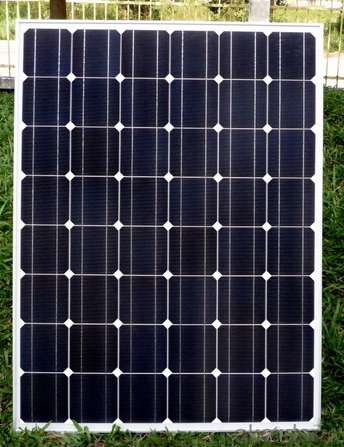
Application
Industrial
Commercial
Residential
Product feather
solar panel refers to a panel designed to absorb the sun's rays as a source of energy for generating electricity or heating.
A photovoltaic (in short PV) module is a packaged, connected assembly of typically 6×10 solar cells. Solar Photovoltaic panels constitute the solar array of a photovoltaic system that generates and supplies solar electricityin commercial and residential applications. Each module is rated by its DC output power under standard test conditions, and typically ranges from 100 to 365 watts. The efficiency of a module determines the area of a module given the same rated output – an 8% efficient 230 watt module will have twice the area of a 16% efficient 230 watt module. There are a few solar panels available that are exceeding 19% efficiency. A single solar module can produce only a limited amount of power; most installations contain multiple modules. A photovoltaic system typically includes a panel or an array of solar modules, a solar inverter, and sometimes a battery and/or solar tracker and interconnection wiring.
Packaging
24-26pcs into carton 312pcs for 20 foot container 712pcs for 40 foot container.
- Q: I have a cabin that is way out in the middle of no where, it would cost 000's of dollars to get power to it. If I have a 8,000 BTU air conditioner that runs on 25 volts and 5 amps (or 875 watts)How many solar panels will I need to run this during the day, plus charge the batteries to run it all night? How many batteries would I need
- OK, in addition to the solar panels, you wil need an inverter (DC to AC; 2V t0 20V) capable of delivering 20A continuously and as much as 40A for the compressor starting surge, and a fairly large battery bank capable of delivering something over 2000 watts continuously (losses in the charging and conversion process) as well as the surge. So, if your actual demand is now calculated around 2000 watt/hour, and you need to both run the unit and charge batteries during the daylight hours - and considering that the ideal charging rate for a lead-acid battery is on the order of 0% of its capacity, you will need a huge reserve on the battery section and a huge excess on the solar section to make up for the 5 hours maximum input. So, the average high-quality deep-discharge battery will do about 400Ah @ 2.6V. Which comes to 5040 watts for one hour. For round figures, it will give you 2000 watts for 2.5 hours. You will need a minimum of eight of them just to make your system run for the 9 hours you are anticipating. Given that you do not want to run the batteries to zero each night, a 50% reserve would be a wise investment - comes to now twelve (2) batteries. Now, you will have to make 2000 watts (to run the unit) and also produce and another 8600 (per hour for five hours) watts to charge the batteries for the next night. Again, for round figures, you will need 0,000 watts of solar power, or seventy (70) panels. At ~0 watts/s.f. (00 watts/meter), that comes to about 000 square feet or 00 square meters. Modern non-crystaline panels may reduce this by 20%, or so but no more than that. You will be charging the batteries at roughly 20% of their discharge capacity - which will pretty much cut their service live in half, or so. As the average deep-discharge battery has about an 8-year life span under ideal conditions (and your situation will be far from ideal) you may expect to replace them every four years or so with good care. Much less with no care.
- Q: Can solar panels be recycled? What about the manufacturing of these panels is it done in an Eco-friendly way?
- All kidding aside, you will possibly desire to do not forget that the White abode is the suited representation of the u . s . to the worldwide. because of fact of this that's equipped so vast and ambitious, and ambitious. image voltaic panels and wind generators will tutor a destructive connotation, form of like antennas on a boarding abode with wires putting down ought to characterize a ghetto to the castles and empires of the worldwide. there is likewise the reason for uninterrupted electricity throughout the time of an attack on the capital, it continues to be a area of the regulations of conflict you recognize. including option potential sources might supply a splash as to how the device works, or no remember if it somewhat is not that way, might come throughout the time of as being hypocritical, or purely for tutor (Like that's not being achieved now...)
- Q: Hey i am going to build a scale model house and demonstrate how you would use solar panels to provide energy. I am thinking of buying some kit solar panels and wiring up some lights to show how they power the home. Also i might hook up a battery in the house to show how you can store the energy. I might also have a large battery hooked up outside the house to represent a power plant that could provide emergency power. Any ideas or comments would be great. Thanks
- By gaps you could mean that it is expensive. Also, there is the debate over whether or not giving people incentives like tax breaks is a good idea Also, it takes a while to recoup the initial invesment in an array, although tax incentives would help and lastly, a solar array big enough to power the united states would have to be in an obnoxiously large area, alhough the ideal areas are already uninhabited because they are too hot.
- Q: Are there any noise concerns with solar panels?
- No, solar panels do not produce any noise as they generate electricity from sunlight without any moving parts.
- Q: Ok so i have to solar panels to charge a battery however the panels hooked up in series does charge the battery very slowly because series connections only multiplies the voltage but leaves the current the same. Is there a way i can also hook both of them up in parallel at the same time to multiply the current for faster charge? I know i can do this with 4 panels but i dont want to spend extra. So is there a way to hook up 2 solar panels in series and parallel at the same time? Thanks in advace
- Homemade okorder /
- Q: I've run out of things to keep me entertained recently and as part of a larger project, I was curious if its possible to 'McGuyver' up a solar panel out of common materials?
- Building your own panels can be an interesting experiment, but if you are looking for solar panels to provide significant, consistent output, you should buy factory made ones. I get lots of calls from people who built their own panels and get a fraction of the advertised output from them. Plus, factory built panels will last 40 - 50 years, with a 25 year warranty, how sure are you that you can build something that can withstand the outdoors for that long? The price of panels has dropped a lot this year, plus with rebates and tax credits, it's getting more affordable.
- Q: How much energy can a solar panel produce?
- The amount of energy a solar panel can produce depends on various factors such as its size, efficiency, location, and the amount of sunlight it receives. On average, a typical solar panel can generate between 250 to 400 watts of power per hour.
- Q: I have a question about solar panels. What are the benefits of this system if I installed in my home. for example i know it produces electricity but does it do anything else? How many panel would you guys think I would need for 2000 sq ft. do you know if it produces hot water? Thanks for your help
- Solar panels have been expensive, and not $00,000 about 30 to 50. There are new technologies that are just coming on line which supposedly reduce that for the same output by /2 to 2/3's which will, when these become widely available finally become practical, with tax breaks and incentives for the majority of people, either in their homes or businesses. I believe there are some panels that position the panels in such a way that you can buy a hot water collector under the photovoltaics and will produce hot water as well.
- Q: How do solar panels affect the overall carbon footprint of a building?
- Solar panels can significantly reduce the overall carbon footprint of a building. By harnessing clean and renewable energy from the sun, solar panels generate electricity without emitting greenhouse gases. This means that the building relies less on fossil fuel-based electricity, reducing its carbon emissions. Additionally, solar panels can offset the energy consumption of a building, further minimizing its carbon footprint, making it a sustainable and environmentally-friendly choice.
- Q: Can solar panels be used to power swimming pools or hot tubs?
- Yes, solar panels can be used to power swimming pools or hot tubs. Solar panels convert sunlight into electricity, which can be used to power various appliances and devices, including pool pumps and heaters. By harnessing the sun's energy, solar panels can help reduce energy costs and make pool or hot tub operation more environmentally friendly.
Send your message to us
A1 Solar Panels - Mono Solar Panel 290W A Grade with Cheapest Price
- Loading Port:
- Shanghai
- Payment Terms:
- TT OR LC
- Min Order Qty:
- 50 watt
- Supply Capability:
- 50000 watt/month
OKorder Service Pledge
OKorder Financial Service
Similar products
Hot products
Hot Searches
Related keywords
